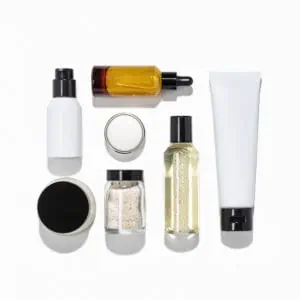
Medical Review By: Candace Marin, APRN
You’ve probably put a lot of effort into figuring out the products your skin needs to be healthy. But if you’re using more than two skin care products, you may find yourself stumped about which one(s) to apply first. Knowing the correct answer matters more than you might think.
“There is a specific order you should follow to get the maximum benefits from each product,” said Candace Marin, an advanced practice registered nurse at Water’s Edge Dermatology.
“Generally speaking,” said Marin, “you should apply thinner products first because your skin won’t absorb them well if you apply thicker ones they can’t penetrate, such as sunscreen, beforehand.”
To get the best results from your skin care routine, Marin recommends applying products in the following order.
Morning routine
1. Cleanser
Naturally, you want to start with a clean face, but a surprising number of people skip cleansing, particularly in the morning.
“People just splash water on their face because they assume their skin doesn’t get dirty while they’re sleeping,” Marin said. “But how often do you wash your pillowcase and pillow? All the dirt and dust mites get onto your face overnight.”
RELATED: The Best Facial Cleanser for Your Skin Type
2. Toner
Toner isn’t essential, Marin noted. But if you like to use it, this is the point in your morning routine to do it.
“People who have oily skin are usually the ones who prefer to use toner, but anyone can use it to remove soap scum or dirt that may be left behind after cleansing,” she explained.
3. Vitamin C serum
Vitamin C serum provides a variety of benefits — reducing the appearance of sun spots, making wrinkles less visible, guarding against sun damage — but it can only deliver on these promises if it’s applied before heavier products.
“Vitamin C serum is very thin and can’t penetrate heavier products like moisturizer, so it would be pointless to use it any later in your routine,” said Marin.
You can apply vitamin C serum in the morning or at night. Marin recommends using it in the morning so you can benefit all day from the protection it offers against free radicals generated by sun exposure.
4. Spot treatments
Many spot treatments for acne, dark spots and scars have a thin consistency, so apply these before moisturizer and sunscreen. “Otherwise, you’re just creating extra barriers for spot treatments to get through,” said Marin.
If you’re using both a spot treatment and a retinol, apply the spot treatment in the morning and the retinol at night, Marin advised. Using them together can cause irritation. In addition, spot treatments that contain benzoyl peroxide decrease the effectiveness of some retinol/retinoids when they’re used at the same time. Differin (adapalene), an acne treatment, is one that is okay to use with benzoyl peroxide.
5. Moisturizer
Now that you’ve applied the thinner products, you’re ready for moisturizer. Apply it every day in the morning and at night.
“Look for a moisturizer that contains ceramides, which are particularly effective at providing hydration and locking it into your skin,” Marin said.
If your skin is dry or sensitive, opt for a cream instead of a lotion.
RELATED: Lotion vs. Cream vs. Ointment: Which to Use When
Moisturizer is important for everyone, even people with oily skin. It is a definite must if you’re using a retinol/retinoid cream because it can dry out your skin. For people with oily skin, a moisturizing lotion is preferred over a cream.
If you like using eye cream, you can apply it with your moisturizer at night. If you’re using eye cream to treat under-eye circles, however, apply it in the morning when you apply other spot treatments.
6. Sunscreen
As the thickest product of all, sunscreen should be applied last in your morning routine. Choose a broad-spectrum sunscreen with an SPF of 30 or higher.
If you prefer, you can use a moisturizer with SPF 30. But avoid this surprisingly common mistake: “Many people think they can use a moisturizer with SPF 15 and apply makeup with sunscreen with SPF 15 on top of it, but that doesn’t equal SPF 30,” Marin explained. “You won’t have enough protection from the sun.”
Evening routine
1. Cleanser
Follow your morning cleansing procedure.
2. Retinol/retinoids
If you use a retinol or retinoid product for wrinkles or acne, apply it in the evening, after you wash your face. (Retinol is milder and found in over-the-counter products, while retinoids are only available by prescription).
Retinoids increase cell turnover and therefore can lead to light sensitivity and dryness. They may be less effective during the day because sunlight causes retinol and retinoids to break down.
To avoid irritation, use the product every other night so your skin has a chance to adjust to it. If you don’t experience any side effects, such as burning, peeling or redness, you can apply it every night.
If your dermatologist prescribes a retinoid, he or she will likely advise you to use it just a few times a week at first.
3. Moisturizer
Apply moisturizer to seal in moisture overnight and help you wake up with healthier, better-looking skin.
Article Written By: Jessica Brown, a health and science writer/editor based in Brooklyn, New York. She has written for Prevention magazine, jnj.com, BCRF.org and many other outlets.





